Figure shows. In cross section m three solid cylinders, each of length L and uniform charge Q. Concentric with each cylinder is a cylindrical Gaussian surface, with all three surfaces having the same radius. Rank the Gaussian surface according to the electric field at any point on the surface, greatest first.

all tie
The correct Answer is:d
Step by step video, text & image solution for Figure shows. In cross section m three solid cylinders, each of length L and uniform charge Q. Concentric with each cylinder is a cylindrical Gaussian surface, with all three surfaces having the same radius. Rank the Gaussian surface according to the electric field at any point on the surface, greatest first. by Physics experts to help you in doubts & scoring excellent marks in Class 12 exams.
Updated on:21/07/2023Topper's Solved these Questions
- ELECTRIC FLUX AND GAUSS LAWBook:CENGAGE PHYSICSChapter:ELECTRIC FLUX AND GAUSS LAWExercise:Subjective type
Explore 7 Videos
- ELECTRIC CURRENT AND CIRCUITBook:CENGAGE PHYSICSChapter:ELECTRIC CURRENT AND CIRCUITExercise:Interger
Explore 8 Videos
- ELECTRIC POTENTIALBook:CENGAGE PHYSICSChapter:ELECTRIC POTENTIALExercise:DPP 3.5
Explore 14 Videos
Similar Questions
A spherical Gaussian surface encloses, and is concentric with, a charged spherical conductor. If the TNEI over the Gaussian surface is negative, what can you say about the electric field →E at a point on the surface?
View SolutionThree large plates having uniform surface charge densities are shown in figure. Electric field at point 'P' will be :
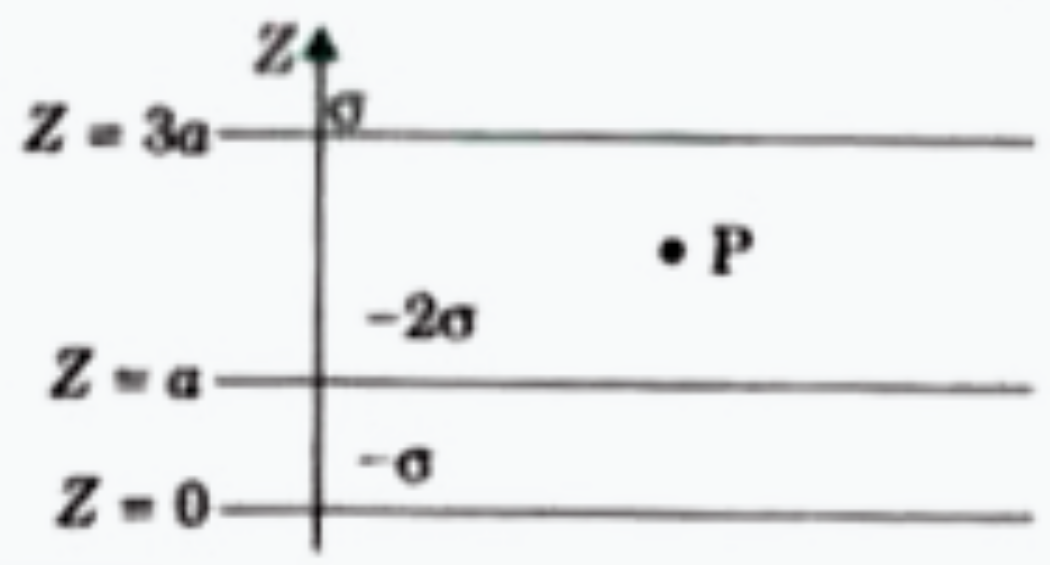
View Solution
Knowledge Check
Figure shows. In cross section m three solid cylinders, each of length L and uniform charge Q. Concentric with each cylinder is a cylindrical Gaussian surface, with all three surfaces having the same radius. Rank the Gaussian surface according to the electric field at any point on the surface, greatest first.
 AI→II→IIIBII→I→IIICIII→II→IDall tie
AI→II→IIIBII→I→IIICIII→II→IDall tieThree point charges are placed as shown in the figure. S is a gaussian surface ϕ is the net flux passing through surface A and E be the electric field at point P on the surface, then
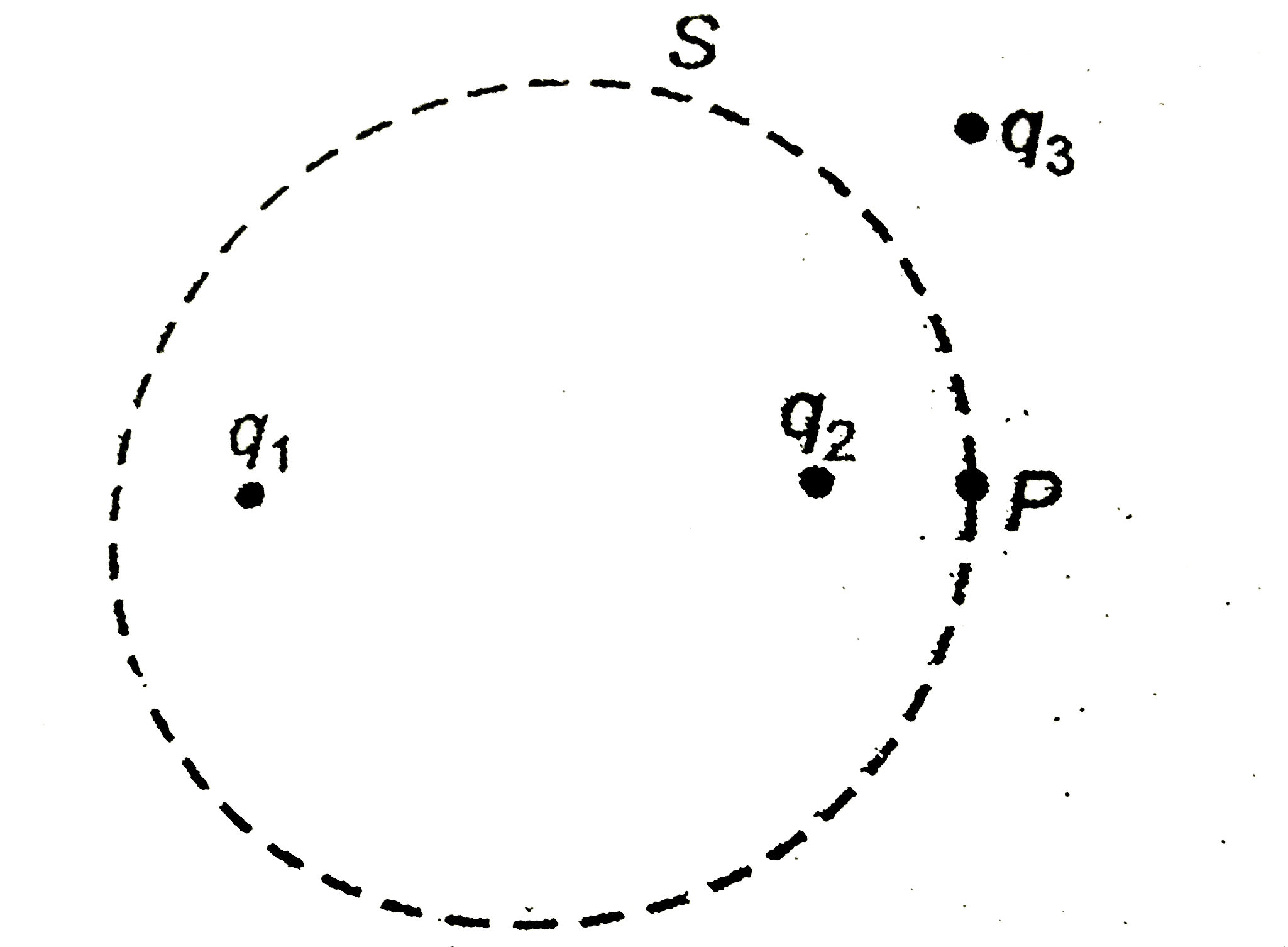 AFlux ϕ is due to q1 and q3 onlyBFlux ϕ is due to q1 and q2CElectric field at point P is due to q1 and q2 onlyDFlux ϕ is due to q3 only
AFlux ϕ is due to q1 and q3 onlyBFlux ϕ is due to q1 and q2CElectric field at point P is due to q1 and q2 onlyDFlux ϕ is due to q3 onlyConsider the Gaussian surface that surrounds parts of the charge distribution shown in figure. Then the contribution to the electric field at point P arises from charges
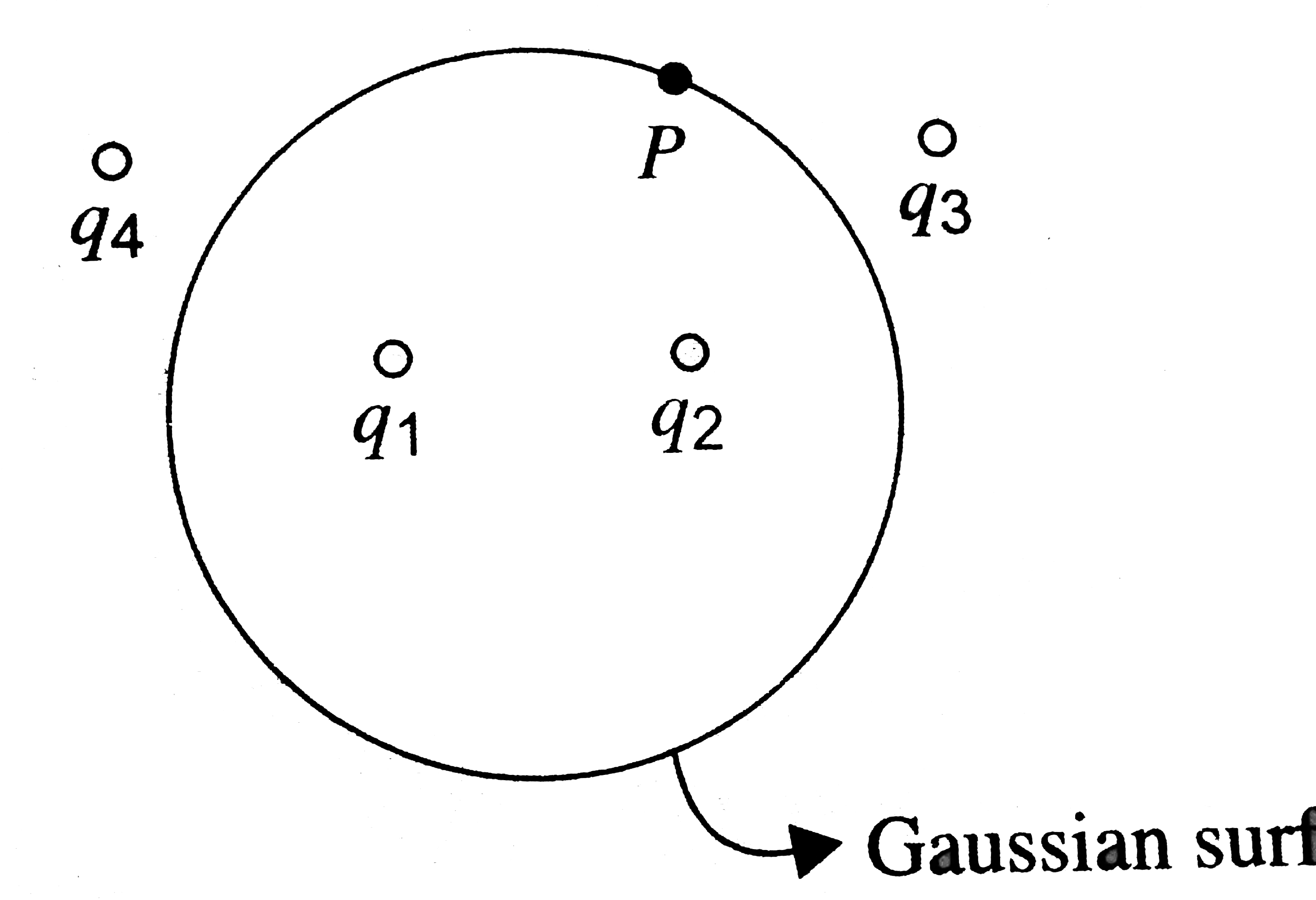 Aq1andq2onlyBq3andq4onlyCq1,q2,q3,andq4Dnone of the above
Aq1andq2onlyBq3andq4onlyCq1,q2,q3,andq4Dnone of the above
An infinite cylinder of radius r with surface charge density σ is rotated about its central axis with angular speed ω. Then the magnetic field at any point inside the cylinder is
View SolutionThree large parallel plates have unifrom surface charge densities as shown in the figure. What is the electric field at P
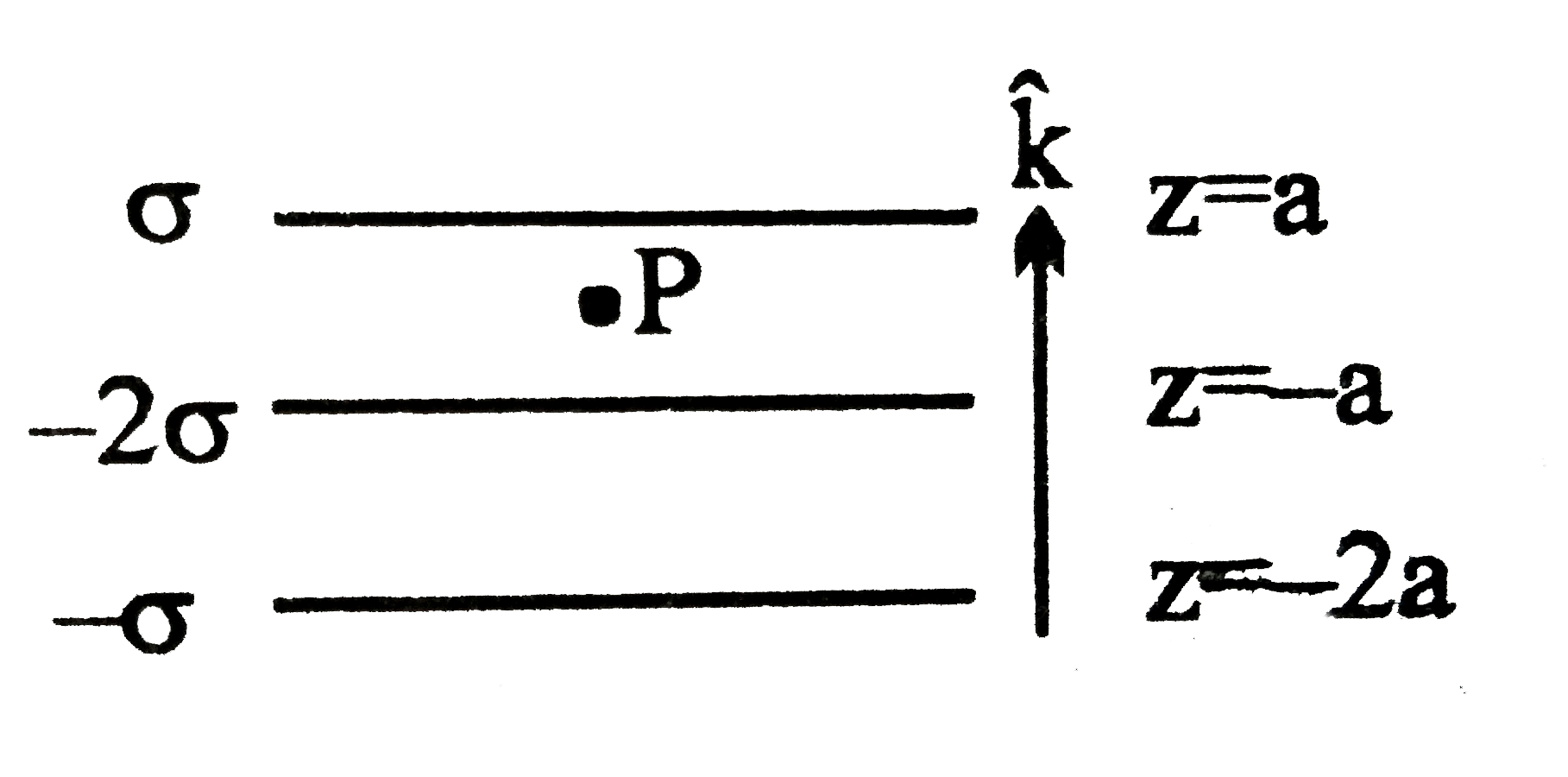 .
.
View SolutionFigure shown four solid spheres, each with charge Q uniformly distributed through its volume. The figure also shows a point P for each sphere. All at the same distance from the centre of the sphere. Rank the spheres according to the magnitude of the electric field they produce at point P.
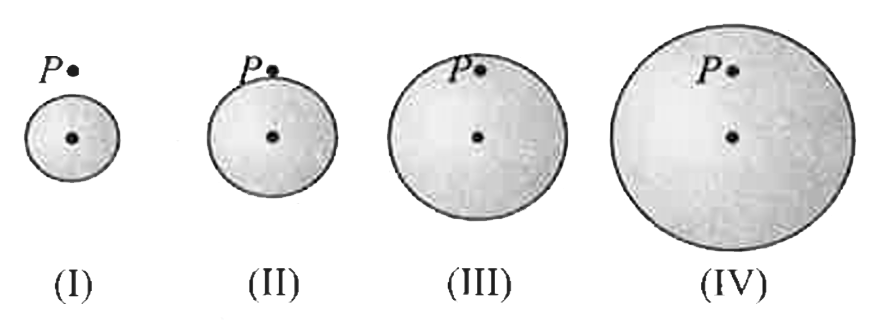
View SolutionA point charge of 1.77 μC is at the centre of a cubical gaussian surface having each side 50 cm. what is the net electric flux through the surface?
View SolutionA cylinder of radius R and length L is placed in a uniform electric field E parallel to the axis. The total flux for the surface of the cylinder is given by
View Solution